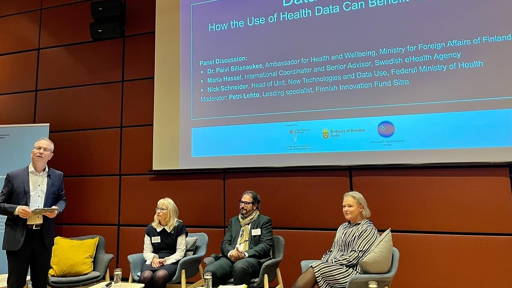In April 2024, the European Parliament approved the text of the provisional agreement on the European Health Data Space (EHDS). The regulation will come into force 20 days after its publication in the Official Journal of the European Union, likely by the end of 2024 or early 2025. Full technical and infrastructural readiness is anticipated within four years.
Implementation roadmap
The EHDS has a clear goal: to improve healthcare across the European Union by enhancing data sharing and accessibility. Its implementation will unfold over five years, following a structured timeline. Though the regulation has been approved, it has yet to be officially published. Based on insider opinion, it will happen in late 2024 or early 2025, marking the official start of the process.
The roadmap comprises two main phases:
- Secondary Legislation Phase (2025–2027): The first two years will focus on drafting secondary legislation, including Implementing and Delegating Acts. These will define the technical specifications required for EHDS operations.
- Member State Preparation Phase (2027–2029): The subsequent two years will involve member states preparing to meet their obligations under the EHDS, such as creating data hubs and integrating with the EU-wide data infrastructure, including the Patient Summary exchange network.
Full implementation of the EHDS is expected around 2029. During this period, the European Commission will collaborate with member states and stakeholders through joint pilot projects and actions to build the necessary infrastructure and technical details.
The primary use of data nears completion, while secondary use remains a challenge
The EHDS framework encompasses both the primary and secondary use of health data, though progress in these areas has varied.
The primary use of data: The EU already operates a voluntary system for primary data exchange called MyHealth@EU. Currently, 14 member states participate in this system, which serves as a foundation for the EHDS. The European Commission encourages more countries to join MyHealth@EU to gain valuable experience and prepare for EHDS obligations.
The secondary use of data: This part of the EHDS is less developed. The European Commission is taking steps to establish a framework for secondary data exchange. There are three activities that are right now the priority:
- Forming a community of practice comprising authorities designated by member states as future health data access bodies.
- Launching joint projects to test the infrastructure and procedures for handling data requests.
- Implementing capacity-building initiatives to facilitate the exchange of best practices among member states.
EHDS is ambitious, but implementation won’t be easy
Is it possible that by 2030, there will be no borders for data among all EU countries? Theoretically, yes, but it will require substantial infrastructure investments. A key issue is the varying levels of healthcare digitalization across EU member states. While countries like Estonia have advanced digital health infrastructures, others lag behind. The EHDS does not mandate digitalization but instead regulates data once it has been digitized, giving member states flexibility in achieving these standards.
Public trust is another significant factor. Convincing citizens that their health data will remain secure and that its secondary use will adhere to ethical principles is crucial. Ongoing discussions focus on the timing and approach of public awareness campaigns, with member states playing a central role in communication efforts. EHDS includes an opt-out rule, meaning that by default, the patient’s data will be exchanged unless they actively choose to prohibit it.
On the financial front, the European Commission has allocated €810 million to support EHDS implementation, with additional funds available through the Recovery and Resilience Plans, which earmark €14 billion for digitalization across sectors. A further challenge is the need to balance EU-wide standards for data interoperability with national flexibility, particularly regarding secondary data use regulations.
Can the EHDS deliver on its promises?
The EHDS is expected to bring transformative benefits in three core areas. For citizens and healthcare providers, it will offer seamless, immediate, and free access to personal health data across member states, improving continuity of care. Healthcare professionals, with access to comprehensive patient data, are likely to reduce redundant testing and make more accurate diagnoses.
In economic terms, the EHDS aims to create a more integrated internal market for health data services by establishing common interoperability standards. This could open up a pan-European market for service providers and foster a more harmonized approach to health data management across the EU.
For research and innovation, the EHDS will create a unified platform and governance structure for accessing health data, potentially establishing the world’s largest health data resource. This could accelerate medical research and healthcare innovation while maintaining robust privacy protections. The regulation ensures that expanded data access is balanced with patient rights, including the option to opt out of secondary data use in specific public interest cases. This underscores the EU’s commitment to protecting individual privacy within this sweeping initiative.
As the EHDS moves closer to full implementation, it holds the potential to revolutionize healthcare delivery, research, and innovation across the EU. However, its success will depend on member states prioritizing the establishment of the necessary infrastructure and embracing the digital transformation of healthcare. Equally critical will be the European Commission's role in providing clear guidelines and opening funding programs to support countries lagging behind in creating robust data exchange systems.
The initial enthusiasm is there. Now, action must follow to fulfill the promise of modern, AI-ready healthcare.






